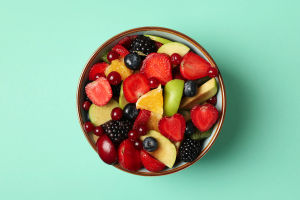Lykkers, what’s your go-to breakfast cereal that fuels your mornings?
Whether you love a crunchy granola or a classic bowl of oatmeal, breakfast cereals offer a delicious start to the day!
Exploring the World of Breakfast Cereals
Breakfast cereals are a staple in many households around the world, providing a quick and convenient meal option. With a wide variety of cereals available, it can be overwhelming to choose the right one for your dietary needs and taste preferences. Let’s break down the different types of breakfast cereals and their nutritional benefits.
1. Whole Grain Cereals
Whole grain cereals are made from unrefined grains that retain all parts of the grain kernel—bran, germ, and endosperm. Examples include oatmeal, whole grain wheat flakes, and brown rice cereal.
Nutritional Benefits: These cereals are typically high in dietary fiber, providing around 4-6 grams per serving. They are also rich in essential nutrients such as B vitamins, iron, and magnesium, contributing to overall health. Whole grains are known for their ability to keep you fuller for longer, making them an excellent choice for those looking to maintain a healthy weight.
2. Sugary Cereals
Sugary cereals are often brightly packaged and marketed towards children, featuring fun shapes and characters. Examples include frosted flakes, fruity loops, and chocolate puffs.
Nutritional Information: While these cereals can be tasty and enjoyable, they are usually high in sugar, often containing 12 grams or more per serving. Additionally, they tend to be lower in fiber (around 1-2 grams), which can lead to quick spikes in blood sugar levels. Consuming these cereals regularly may contribute to health issues like obesity and diabetes if not balanced with other nutritious foods.
3. High-Protein Cereals
High-protein cereals cater to those looking to increase their protein intake, often incorporating ingredients like nuts, seeds, or protein isolates. Examples include protein-enriched granola or cereals made from quinoa and other protein-rich grains.
Nutritional Benefits: These cereals can provide 10-15 grams of protein per serving, making them great for muscle repair and recovery, especially after workouts. They tend to be more filling than their sugary counterparts, helping to keep hunger at bay throughout the morning.
4. Gluten-Free Cereals
For those with gluten sensitivities or celiac disease, gluten-free cereals offer a safe and delicious option. Examples include rice-based cereals, corn flakes, and certain oat cereals that are certified gluten-free.
Nutritional Information: Gluten-free cereals may vary significantly in nutritional value. While some are high in fiber and nutrients, others can be lower in these important elements, so it’s crucial to read labels and choose options that are fortified with essential vitamins and minerals.
5. Granola and Muesli
Granola and muesli are often considered healthier alternatives to traditional cereals. Examples include store-bought or homemade granola mixes and classic muesli, which is usually a mixture of oats, nuts, seeds, and dried fruits.
Nutritional Benefits: Granola can be rich in healthy fats, fiber, and protein, but it is essential to be mindful of portion sizes, as it can also be high in calories and sugars. Muesli is generally less processed and can be a great source of whole grains and nutrients when prepared without added sugars.
With so many options available, choosing the right breakfast cereal can be a fun and rewarding experience. Whether you prefer the wholesome goodness of whole grains, the delightful crunch of granola, or the nostalgic taste of sugary cereals, there’s something for everyone. Remember to read labels and choose cereals that fit your nutritional goals, ensuring a healthy and satisfying start to your day!
Healthy Breakfast Cereal Choices - Best & Worst! - Mind Over Munch
Video by Mind Over Munch


